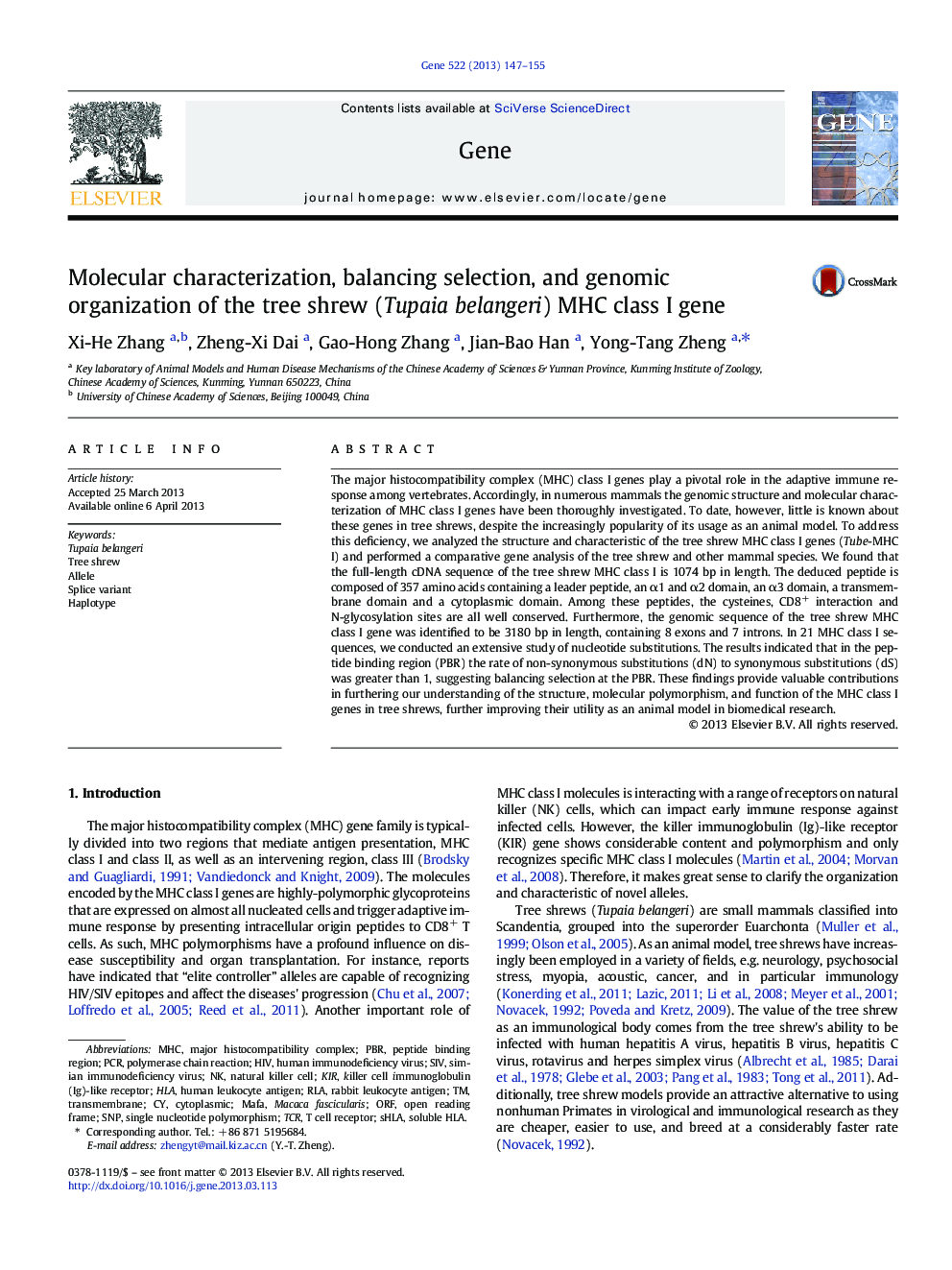| کد مقاله | کد نشریه | سال انتشار | مقاله انگلیسی | نسخه تمام متن |
|---|---|---|---|---|
| 2817212 | 1159975 | 2013 | 9 صفحه PDF | دانلود رایگان |

• DNA sequence of Tree shrew MHC I were identified for the first time.
• The cDNA sequences large increase in the number of MHC class I alleles.
• The polymorphism of PBR is maintained by balancing selection.
• Sequence of tree shrew MHC I region can be alternatively spliced with a few forms.
• N-glycosylation sites, cysteines residues and peptide bound sites are conserved.
The major histocompatibility complex (MHC) class I genes play a pivotal role in the adaptive immune response among vertebrates. Accordingly, in numerous mammals the genomic structure and molecular characterization of MHC class I genes have been thoroughly investigated. To date, however, little is known about these genes in tree shrews, despite the increasingly popularity of its usage as an animal model. To address this deficiency, we analyzed the structure and characteristic of the tree shrew MHC class I genes (Tube-MHC I) and performed a comparative gene analysis of the tree shrew and other mammal species. We found that the full-length cDNA sequence of the tree shrew MHC class I is 1074 bp in length. The deduced peptide is composed of 357 amino acids containing a leader peptide, an α1 and α2 domain, an α3 domain, a transmembrane domain and a cytoplasmic domain. Among these peptides, the cysteines, CD8+ interaction and N-glycosylation sites are all well conserved. Furthermore, the genomic sequence of the tree shrew MHC class I gene was identified to be 3180 bp in length, containing 8 exons and 7 introns. In 21 MHC class I sequences, we conducted an extensive study of nucleotide substitutions. The results indicated that in the peptide binding region (PBR) the rate of non-synonymous substitutions (dN) to synonymous substitutions (dS) was greater than 1, suggesting balancing selection at the PBR. These findings provide valuable contributions in furthering our understanding of the structure, molecular polymorphism, and function of the MHC class I genes in tree shrews, further improving their utility as an animal model in biomedical research.
Journal: Gene - Volume 522, Issue 2, 15 June 2013, Pages 147–155